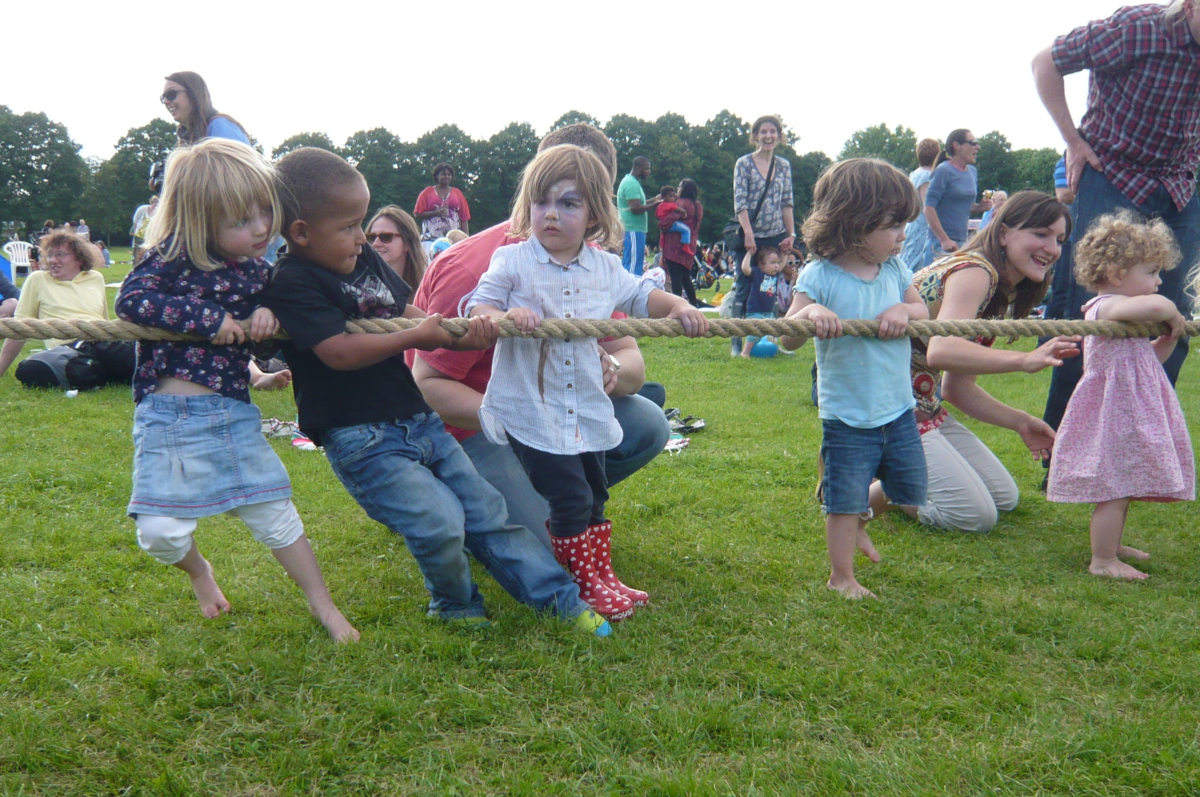“Well-behaved women seldom make history.” —Laurel Thatcher Ulrich
In 1982, my dear friend Dr. Mark Edwards introduced a fair, impartial and objective tool to measure leadership effectiveness. He called it 360 feedback, which is now ubiquitous in organizations throughout the world. The idea is to give leaders the gift of multi-source feedback on critical leadership competencies so that they can understand more clearly how they are perceived by direct reports, peers, and more senior executives.
Typically, the purpose is to provide leaders with anonymous and confidential feedback that will help them develop their leadership skills.

As 360 tools have proliferated and improved, most organizations now conduct the feedback on-line and offer the leader the option of working with a coach to discuss what to do with the feedback. One of the many tools I use is the Zenger-Folkman Extraordinary Leader survey, which provides feedback on five components of leadership and 16 leadership competencies. Over the years, Zenger-Folkman has amassed a large database that enables leaders to see how they stack up on these components and competencies with other leaders in the database, i.e. to see if they fall into the top 10% or 25% of leaders in their respective industry.
Most 360 tools address leadership components related to: character, capability, results orientation, interpersonal skills, and change leadership.
Several competencies are usually listed under each component, for example: Integrity/honesty, deep expertise, problem solving, self-development, goal setting, initiative, communications, relationship building, team development, inspiration/motivation, collaboration, strategic thinking, change leadership, and interdependence.
In our book, The Leadership Lexicon, Dr. Bill O’Brien and I identified over 100 leadership competencies grouped under the components of Character, Capability, Commitment, and Cultural Sensitivity.
Under each of those competencies, we identified five skills. In an earlier post (“Rick’s Profiles in Leadership”), I listed what I believe to be the essential competencies of effective leaders.
The point is that hundreds of authors have proposed hundreds of models for evaluating leadership effectiveness over the past 40 years.
And yet, the world is still facing a crisis in leadership.
As an old, white male, I have to look into the mirror and say, “You, my man, are part of problem!” It seems to me that we need leaders who look less like me and are more representative of the diverse world in which we live. Given that, we still need to clarify what the essentials for leadership are independent of age, race, or gender.
In the simplest of terms, we can distribute all the people in the world into five buckets:
- 5: Leader
- 4: Contributor
- 3: Participant
- 2: Observers
- 1: Detractor
Detractors undermine the mission. They lead people astray. They divert attention from the most important issues.
Observers watch what’s happening from the sidelines. They refuse to get involved. They prefer to be critics instead of actors.
Participants engage fully in the mission. They meet expectations. They achieve their goals reliably and dependably and do their fair share of the work.
Contributors bring fresh ideas. They continually look for ways to improve processes, conditions, and standards. They add value to conversations and accelerate progress.
Leaders make things happen. They propose bold visions of what’s possible. They step up and take responsibility for translating their visions into reality.
Note: The classification is not a function of title or status, it is a function of performance in a given situation.

We have all been in each of those buckets at different moments in our lives.
So, how do we recognize an effective leader when we see one?
Doris Kearns Goodwin recently published Leadership, in which she analyzes the leadership capabilities of four great Presidents whom she has studied for decades: Abraham Lincoln, Teddy Roosevelt, Franklin D. Roosevelt, and Lyndon Johnson. All of these leaders faced enormous challenges during their terms of office, and each proposed bold visions and concrete actions to address those challenges. I highly recommend it.
As I was reading her book, I made note of all the characteristics these leaders exemplified.
What struck me as I read their personal histories—complete with triumphs and tragedies—was the impression that seven essential qualities emerged most powerfully and consistently from a list of over 50 traits that were exhibited by the four Presidents:
-
Empathy
-
Curiosity
-
Humility
-
Courage
-
Humor
-
Vision
-
Agility
Empathy: All four demonstrated deep understanding of their constituents’ lives. They understood the feelings and values of the people for whom they worked. They had an intuitive sense of what gave people a sense of purpose and meaning.
Curiosity: All four were aggressive and agile learners. They demonstrated interest in multiple topics. They inquired about lives and issues in order to develop a deeper understanding.
Humility: All four encountered life challenges that gave them a sense of humility. Lincoln and Johnson suffered from depression. Both Roosevelts experienced tragic losses in their lives that not only gave them perspective, but also took the edge of their egos. They were more concerned with mission-accomplishment than self-aggrandizement.
Courage: All four weren’t afraid to fight for principles and values in which they believed. They always led the charge and out-worked everyone around them. They took the heat when they were wrong.
Humor: All four could engage easily with others and find lightness when darkness prevailed. They could laugh at themselves. They enjoyed social interactions.
Vision: All four had bold ideas for what was possible in whatever endeavor they undertook. They had a long-term perspective and looked beyond the next election cycle. They anticipated problems and took action to prevent them. All four imagined innovative approaches for solving complex problems.
Agility: All four were keenly aware of changing conditions and standards. They adapted quickly when old solutions no longer worked. They continually generated new ideas to navigate changing requirements.
As I read the personal stories of each of these Presidents, it was difficult to narrow the list of critical attributes down to seven. There were so many others I could have included. Here are 50 additional qualities that cover the range of the alphabet. I ran out of steam at WXYZ.
-
Adaptability
-
Ambition
-
Authenticity
-
Accessibility
-
Boldness
-
Conviction
-
Compassion
-
Commitment
-
Credibility
-
Collaboration
-
Confidence
-
Discipline
-
Determination
-
Effort
-
Equanimity
-
Flexibility
-
Forgiveness
-
Generosity
-
Gravitas
-
Hard work
-
Initiative
-
Innovation
-
Interdependence
-
Integrity
-
Interpersonal skills
-
Introspection
-
Judgment
-
Kindness
-
Knowledge
-
Love
-
Motivation
-
Openness
-
Persistence
-
Persuasiveness
-
Prudence
-
Patience
-
Positivity
-
Qi
-
Resoluteness
-
Reflection
-
Respect
-
Restraint
-
Resourcefulness
-
Resilience
-
Sociability
-
Substance
-
Self-Awareness
-
Trustworthiness
-
Unselfishness
-
Vigilance
 You may want to add additional characteristics that you feel strongly leaders should possess. For fun, you may want to evaluate all 46 Presidents on each of those characteristics. Maybe that will be Doris Kearns Goodwin’s next book.
You may want to add additional characteristics that you feel strongly leaders should possess. For fun, you may want to evaluate all 46 Presidents on each of those characteristics. Maybe that will be Doris Kearns Goodwin’s next book.
The most important questions for me in choosing the right competencies, skills, and behaviors of leaders are:
-
What are the requirements of the job we are seeking to fill?
-
What are the most important competencies for that particular job?
-
How can we develop a fair, impartial, and objective system for selecting leaders?
-
How can we provide constructive, multi-source feedback to leaders to help them grow?
As citizens of the planet earth, we need to identify the most important issues that require our attention—we don’t need to manufacture issues that distract us from the real issues.
We also need to select the right leaders to bring bold visions of possibilities for solving those issues; and we need to help diverse leaders to continue to grow.
I believe that the women of the world are starting to bring a fresh perspective on what it means to be a leader; and there is mounting evidence that change is happening politically, socially, and economically. I’m hoping to see many more diverse leaders who embody the seven essentials of leadership I described above. At a minimum, I wish leaders would listen to feedback from multiple sources and make the effort to grow. May it be so.
And, Mark, thanks for introducing this big idea so many years ago. May your work on creating a Green Planet have an even greater impact. Commitment to that issue is the biggest requirement for all leaders at this point in history.
Also published on Medium.




Well done Ricky! Where were you when I needed you ?! JK-i’d Still be CMO instead playing senior softball !!!